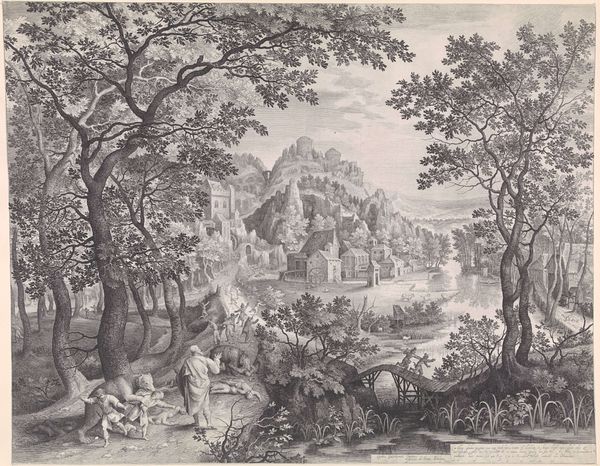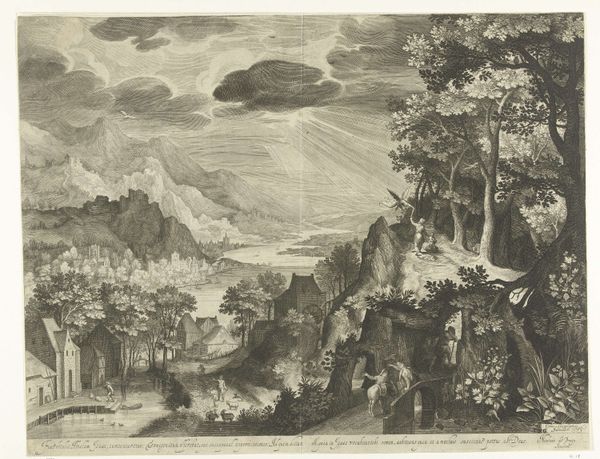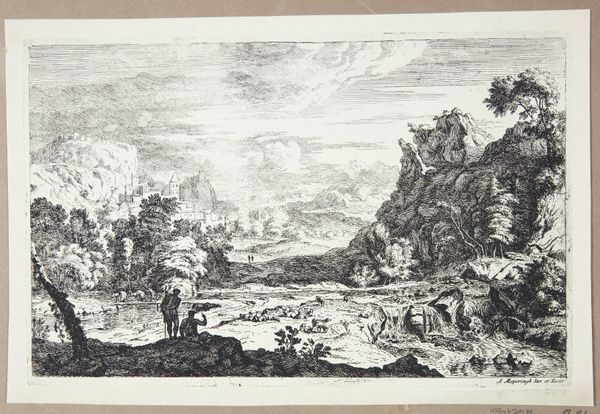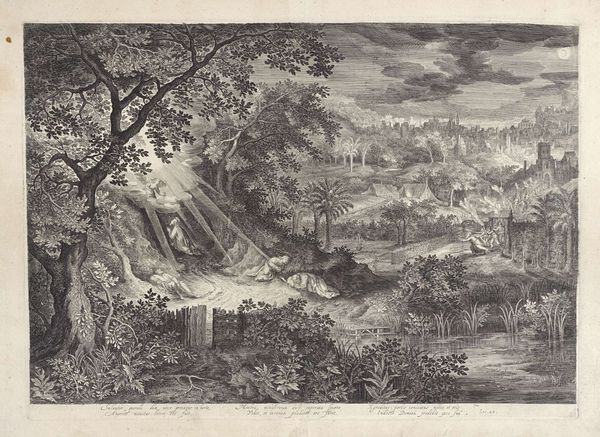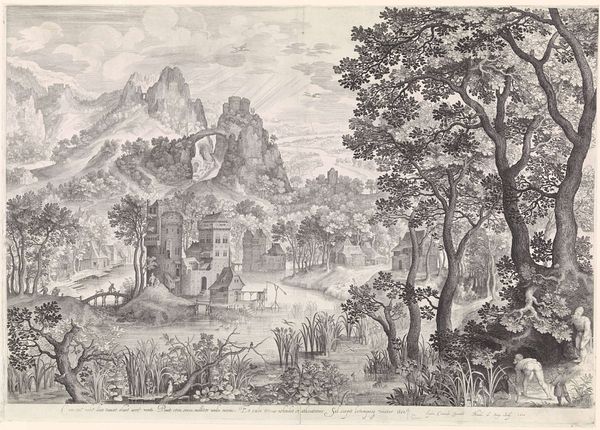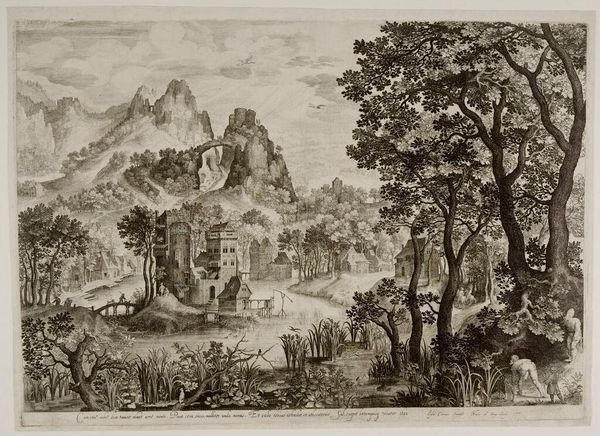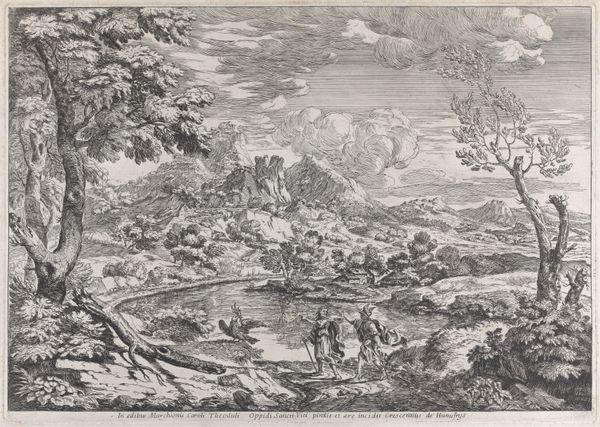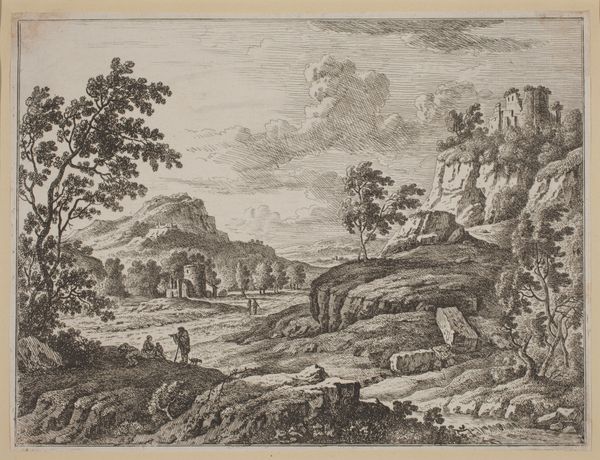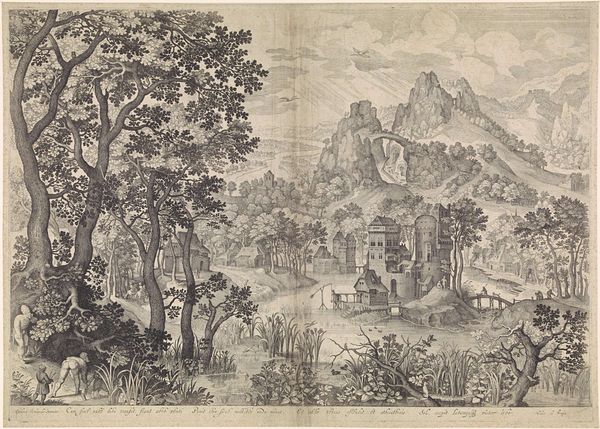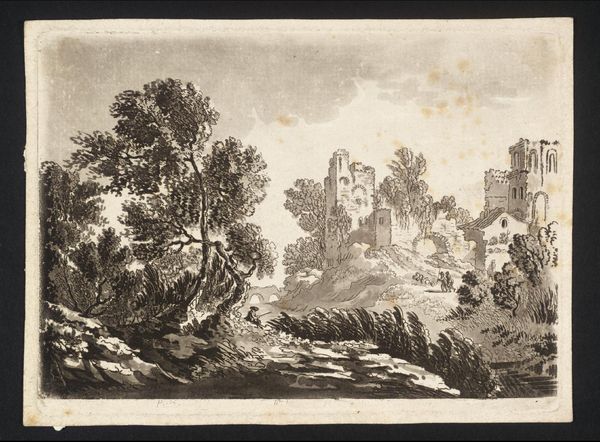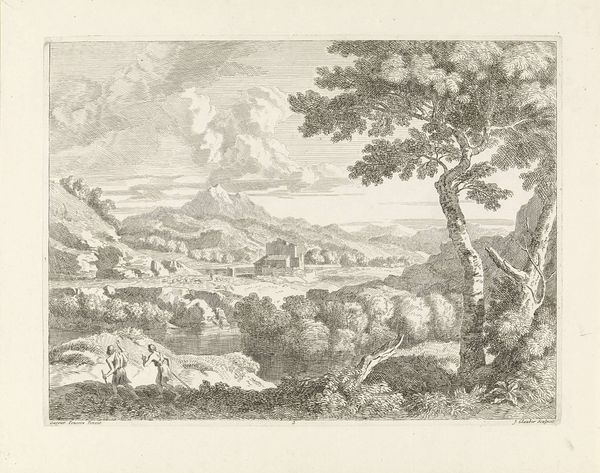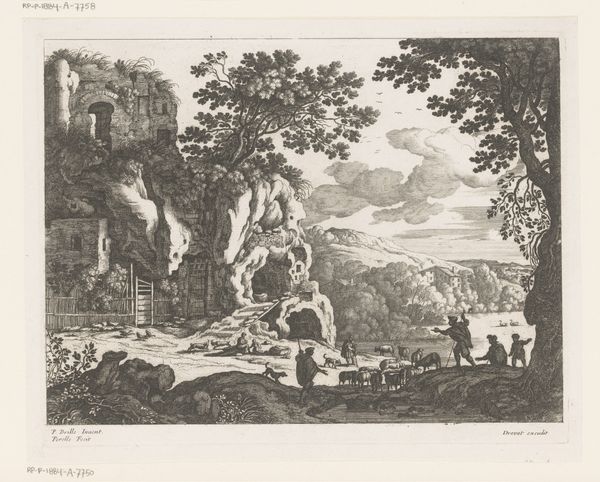
print, etching
#
pen drawing
# print
#
etching
#
landscape
#
mannerism
#
history-painting
#
northern-renaissance
Dimensions: width 655 mm, height 415 mm
Copyright: Rijks Museum: Open Domain
Curator: Nicolaes de Bruyn created this etching titled, "Mozes wordt gevonden door de dochter van de farao", in 1601. It currently resides here at the Rijksmuseum. Editor: My immediate reaction is how strikingly detailed the landscape is. There's a dreamlike quality, but also a certain austerity in the rendering of light and shadow, making the discovery feel somber rather than joyous. Curator: It's interesting that you pick up on that somber note. The story itself, of course, carries themes of exile, deliverance, and chosen destiny. The landscape serves not just as backdrop but as an active participant, framing the scene with motifs of the hidden and the revealed. Do you notice how the framing is almost like a stage? Editor: Absolutely. And on that stage, look at the gender politics! A group of women find Moses, subverting the expected masculine power dynamic of the Pharaoh's court. They are agents of change and nurture within a patriarchal structure, quietly defying the decree of infanticide. Curator: Yes, and this act of finding, of rescuing, speaks to broader historical threads of the period: an undercurrent of feminine resilience woven into the religious narratives of the time, and particularly highlighted during the Renaissance with increased discussions around female figures in scripture. Consider the associations of water and its archetypal connection to birth and rebirth, to the life-giving power of women in both literal and symbolic senses. Editor: And beyond the biblical narrative, we can read it as a commentary on social hierarchies, too. A foundling, regardless of origin, disrupts social order. Moses, despite his unknown lineage at this point, becomes a figure that can threaten existing power structures from his position outside the status quo. It almost reads like early resistance against tyranny, with an improbable origin story. Curator: I agree, and those disruptions echo throughout art history. It is remarkable to note how visual storytelling across time and cultures constantly seeks to unearth these subversive nuances—and this composition really seems to set the stage. The placement and presentation within the landscape contributes significantly to the drama being subtly yet undeniably communicated to us. Editor: Indeed. Reflecting on this piece, it's fascinating how it bridges biblical narrative with early social critique, prompting reflection on historical intersections of gender, power, and identity through the timeless imagery of a child found amidst a vast, indifferent world.
Comments
No comments
Be the first to comment and join the conversation on the ultimate creative platform.
